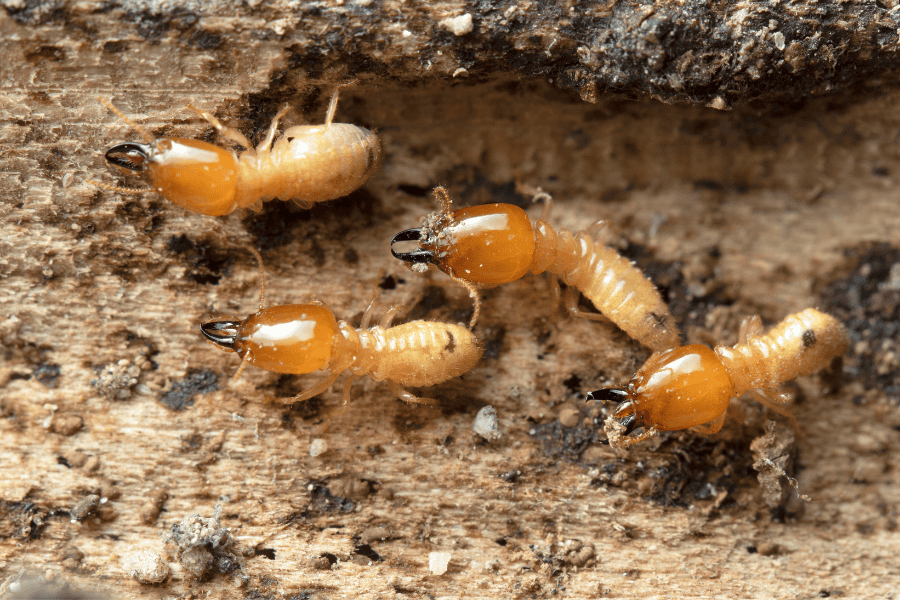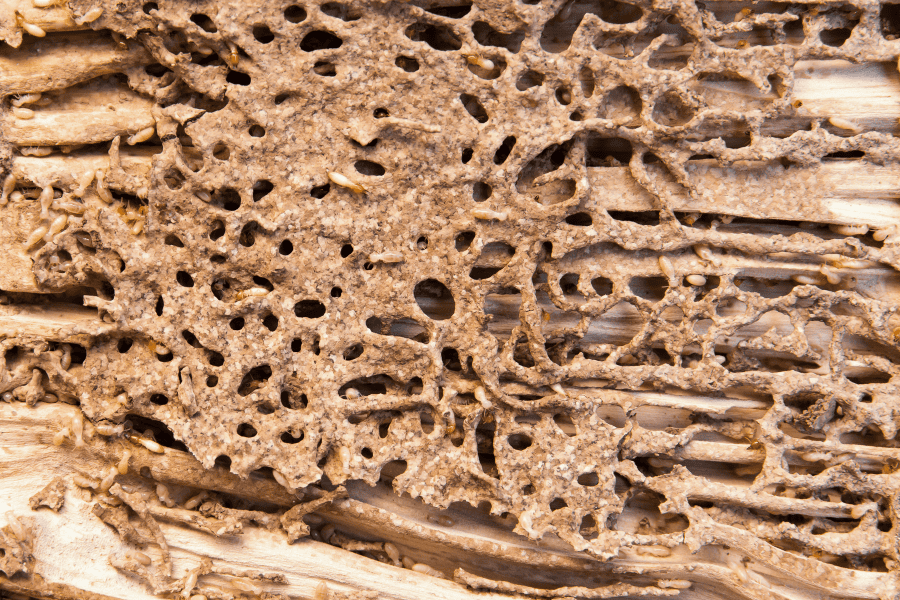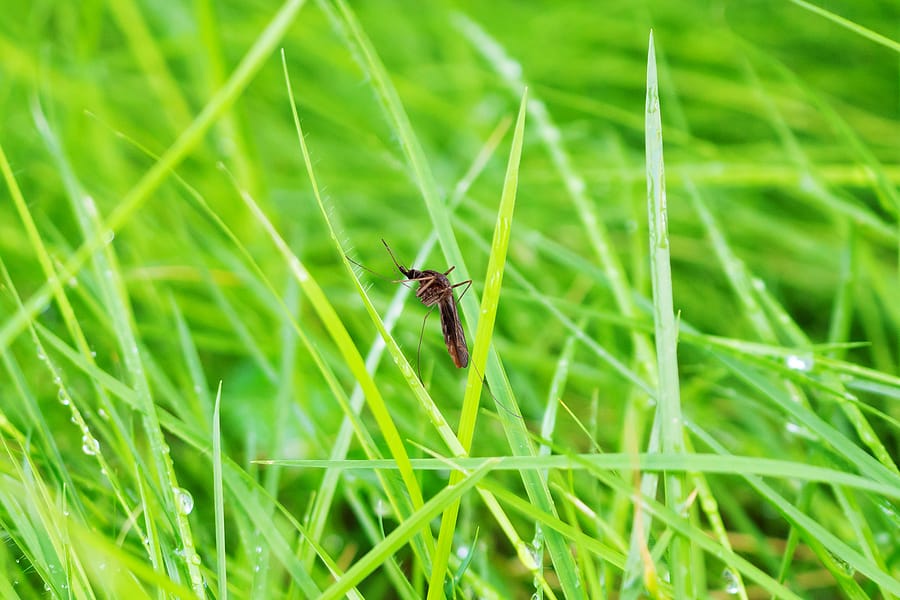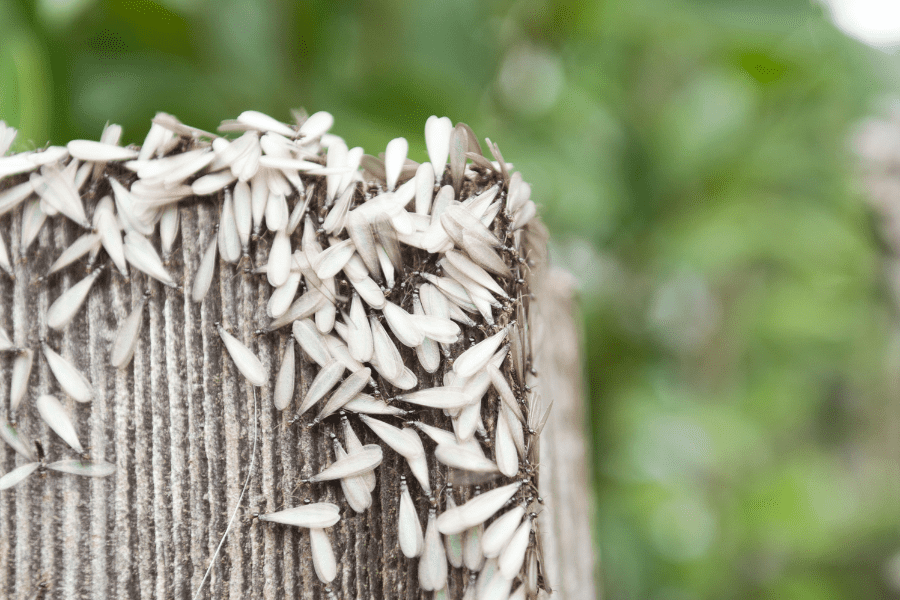READY TO GET STARTED?
REQUEST A FREE ESTIMATE
Fill out the form below or call (336) 226-1448 for a free, no-obligation estimate.

Termites may be small, but the damage they can cause to your home is anything but. With warmer weather in spring and summer, these pests become more active, particularly in places like North Carolina where the climate is ideal for their colonies to thrive. Protecting your home from termites is essential to maintaining its structural integrity and avoiding costly repairs. This comprehensive guide to termite control near me will walk you through what you need to know about termites, how to identify early warning signs, and practical steps to keep them at bay this season.
Termites are wood-eating insects that live in colonies and can chew through wooden structures, flooring, and even wallpaper. The most common types in North Carolina are subterranean termites, which thrive in moist environments and can silently damage your property. Unlike other pests, termites don’t just infest; they destroy.
What makes them particularly challenging is that their activity often goes unnoticed until significant damage has already been done. This means prevention and early detection are crucial for homeowners.
Termites are most active during spring and summer due to the warmth and humidity that North Carolina provides. During these seasons, reproductive termites, also known as swarmers, search for new locations to establish colonies. If they find your home or yard hospitable, it could spell trouble.
Subterranean termites also require moisture to survive, making water sources such as leaky pipes, clogged gutters, and standing water attractive to these pests. The combination of environmental factors and increased termite activity makes spring and summer critical times for homeowners to take preventive action.
Early detection is key to avoiding termite damage. Look out for these common signs of termite activity:
If you spot any of these signs, it’s time to take immediate action.
Keeping your yard tidy and less appealing to termites can go a long way in protecting your home. Here’s how you can do it:
Since termites thrive in moist environments, moisture management is a simple yet effective strategy:
One of the best ways to stay ahead of termites is to inspect your home regularly:
When it comes to termites, being proactive is your best defense. By recognizing warning signs, managing moisture, maintaining your yard, and scheduling regular inspections with termite control near me, you can significantly reduce the risk of a termite infestation. Spring and summer are ideal times to take these steps to your home for years to come.
For homeowners in North Carolina, expert guidance in termite control is just a call away. Protect what matters most by contacting a local pest control professional who understands the unique needs of your region. Don’t wait for termites to make themselves at home in your home!

When most people think of pests, they picture mosquitoes buzzing around in the summer or rodents sneaking indoors to escape the winter cold. However, there is one often-overlooked pest that can cause serious long-term damage if left unchecked: termites. With March approaching, Termite Awareness Month, now is a perfect opportunity for homeowners in North Carolina to prioritize termite inspections. By understanding these silent destroyers and taking proactive steps, you can protect your home from potentially costly damage.
While most pests might take a break during colder months, termites are active year-round, especially given North Carolina’s mild climate. These tiny invaders don’t hibernate but continue to feed on wood, putting your home at risk. Unlike ants or spiders, termites work silently, often causing damage before you even realize they’re there.
Ignoring the threat can result in significant damage, with termites quietly consuming the wooden structures of your home. By the time their presence becomes noticeable, the damage may be extensive and expensive to repair. That is why scheduling a termite inspection should be a priority for homeowners, even during winter.
Identifying a termite infestation early can save you from costly repairs. Despite their ability to hide, termites leave telltale signs that can alert you to their presence.
Knowing these signs is helpful, but identifying an infestation early often requires the expertise of a professional. This is where professional termite inspections come in. A trained pest control technician can conduct a thorough inspection, identifying signs of termites in hard-to-reach or hidden areas like attics and crawl spaces.
Professional inspections are crucial because termites can remain active in areas that are not easily visible. A licensed pest control expert can uncover hidden damage and ensure your home remains protected.
The best way to protect your home from termites is to prevent them from entering in the first place. Here are a few simple yet effective prevention tips:
Termites may be silent, but their impact is anything but. For North Carolina homeowners, understanding the importance of early termite inspections and staying vigilant against these pests is vital. By recognizing the signs of an infestation early and taking preventive measures, you can protect your home from the costly damage termites can cause.
Remember, when it comes to termites, an ounce of prevention is worth a pound of cure. Consider scheduling a professional inspection today with a licensed pest control company near you. Secure your home’s future by learning more about how you can protect it from termites and other pests.
We’re moving in the cooler season, which means termites might not be on your mind right now. But there is no better time to begin thinking about your termite protection plan! There are several termite protection treatments and plans to consider, but if you’re looking for 24/7, 365-day protection, the Sentricon Always Active Bait Station could be the best choice for you. Let’s go over the benefits of this eco-friendly termite control option that might just be perfect for your home.
Sentricon is a highly effective, environmentally responsible treatment option for preventing and eliminating termites. These bait stations are placed strategically around the perimeter of your property and offer 24/7/365 termite protection for your home by eliminating entire termite colonies. Here are some other great benefits to the Sentricon bait stations:
Ready for an always on termite protection plan? Give our team a call today for a free quote!

Spring is a time for renewal and growth, but unfortunately, it’s also a time for pests to emerge from their winter hiding spots and wreak havoc on homes and gardens. North Carolina, with its warm and humid climate, is particularly susceptible to pests during spring. Here are some of the most common spring pests homeowners in North Carolina may experience, along with tips on how to prevent and control them.
Termites are a serious problem in the south, and spring is the time when they start swarming in search of new nesting sites. Termites can cause extensive damage to the structure of homes, and if left untreated, can lead to costly repairs. Homeowners should be on the lookout for signs of termite infestations, such as mud tubes, discarded wings, and wood damage. To prevent termite infestations, homeowners should remove any wood debris or stumps near their homes, repair any water leaks or moisture problems, and have regular inspections by a licensed pest control professional.
Ants are another common spring pest in this area. They are attracted to food, water, and shelter and can quickly become a nuisance in homes and gardens. Ants can also cause damage to plants and can even bite humans and pets. Homeowners can prevent ant infestations by keeping their homes clean and free of food debris, sealing cracks and crevices, and trimming plants away from the home’s foundation.
Mosquitoes thrive in warm, humid environments, making the south an ideal location for them to breed. Mosquitoes can transmit diseases such as the West Nile virus and Zika virus, making them a serious health concern. Homeowners can prevent mosquito infestations by removing any standing water around their property, such as in bird baths or clogged gutters. In addition, homeowners can install screens on doors and windows to prevent mosquitoes from entering the home.
Ticks are another common spring pest. They are often found in wooded areas and can transmit diseases such as Lyme disease and Rocky Mountain spotted fever. Homeowners should take steps to prevent tick bites by wearing long-sleeved clothing, using insect repellent, and avoiding tall grass and brush. In addition, homeowners can keep their yards free of debris and trim back any overgrown vegetation to reduce the likelihood of tick infestations.
Cockroaches are a year-round problem, but they become more prevalent in the spring as the weather warms up. Cockroaches can contaminate food, trigger asthma and allergy symptoms, and transmit diseases. Homeowners can prevent cockroach infestations by keeping their homes clean and free of food debris, sealing any cracks or crevices, and reducing humidity levels.
By working with your local pest control company and taking proactive measures, you can protect your home and family from these common spring pests.

Once the cold weather begins to creep away is when we should begin to see swarming termites. Especially after a big rainfall, mature winged adults will swarm from their original nesting site in hopes of forming new colonies. The most common termite you will see swarming is the Eastern subterranean termite, which is native to North Carolina. Here are some fast facts about these termites:
Swarming is beneficial when creating new colonies. Termites swarm after a colony has reached a certain capacity and is ready to expand. This normally happens once per year for most colonies. Hundreds or even thousands of swarmers, also known as alates, are produced with the sole purpose of reproduction and expansion.
Swarming can occur indoors or outdoors. They cannot survive indoors because of the lack of soil to colonize. If found indoors, they are usually found near windows and light fixtures as they are attracted to light. Whether indoors or outdoors, they usually can’t cause damage. As swarmers, they can’t bite, sting, or chew. The presence of swarms indicates that a colony is nearby, though; so, although the swarmers can’t cause damage, the nearby colony can.
If you begin to see swarming termites and aren’t sure if your home has become infested, be sure to give your local termite control company a call and they can inspect your property and set up a proactive termite control plan.